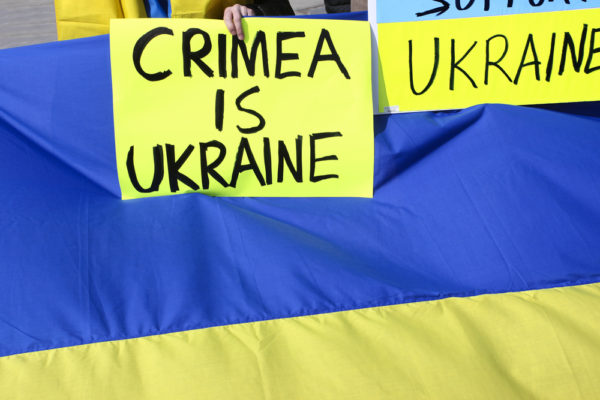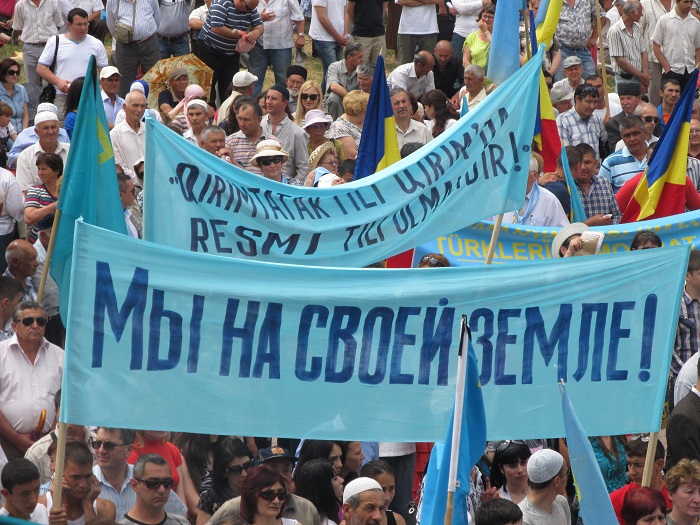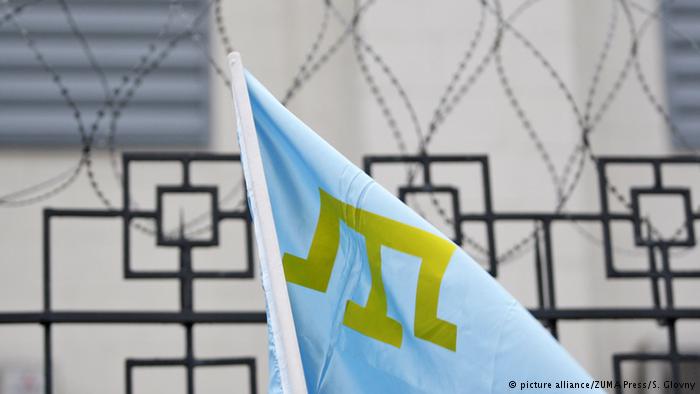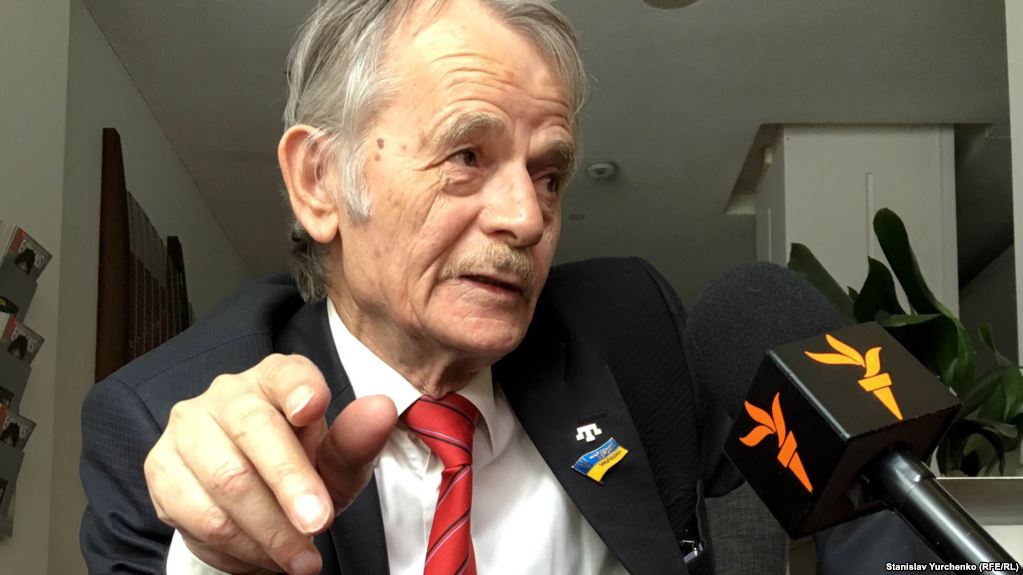Recent partisan movements in Crimea suggest that the "Ukrainian Path" has more support than Russia Propaganda would have us believe. With anti-war graffiti appearing on public buildings, public rewards for those who bring back the head of a Russian commander, and grandmas pouring blood on Russian soldier's graves, could an uprise be nearing? Do Crimeans await liberation?
"It is hard to speak for all Crimeans to determine the exact number of those supporting the Ukrainian path. However, the latest cases of pro-Ukrainian activism can paint the bigger picture of what is going on in the Crimean society," Anna Lukasevich, the chief consultant of the support service in the Mission of the President of Ukraine in the Autonomous Republic of Crimea, explains.
Despite propaganda narratives from Russian authorities regarding the high level of satisfaction with Crimea's so-called accession to Russia, international isolation, covert but forced mobilization for the war in Ukraine, and soaring prices have caused Crimea residents to protest against occupation authorities and gather in a partisans' movement.
People take to the streets with anti-war placards and Ukrainian songs, despite threats and detentions.
Simferopol residents began to stage one-person protests in the early days of Russia's invasion of Ukraine. They held anti-war placards in front of the city council, World War II, and monuments of Ukrainian poet Taras Shevchenko.
These actions may seem insignificant when condemning military actions, but even minor acts of insubordination to a military machine immediately fall into the eye of law enforcement officers. Most protesters face administrative penalties, and some are subjected to criminal charges for referring to Russia's invasion as a war. By law, it has to be referred to as a special operation. The elderly are no exception. Lydia Pronina, for example, was fined after publicly condemning Russia's invasion of Ukraine.
On the other hand, people continue to write anti-war graffiti on buildings, benches, billboards, and automobiles. On 11th April, someone in Sevastopol wrote the names of the Ukrainian cities most affected by Russia's missile attacks and occupation: Bucha, Mariupol, and Kharkiv.
All of these acts do not prove Crimea's hopes for liberation. Still, they do demonstrate that pro-Ukrainian activists and ordinary citizens do not want to leave the occupied peninsula and want Russia's policy to change. Cultural determination is a better indicator of this. On 30th June, during the celebration of Youth Day in Russia, performers sang several Ukrainian hits, one of which is about hoping that the war in Ukraine will end soon - Obiymi by Okean Elzy (Hug me), which has been banned in Russia, according to NikVesti.
Destruction of Russian propaganda signs
Citylights promoting propaganda on the war with Ukraine receiving improvements from activists. Funeral wreaths and a handwritten poster that reads "Rest in Pieces" are examples. Some, such as a 55-year-old Sevastopol resident, attempted to remove war banners, while others cut the wheels of cars with the propaganda sign Z. In addition, Kerch, the owner of a company, stated that if he saw another Z sign on the front window of his tractor and he will have it removed and the employee, immediately. Krym Kray Partisanskoy Slavi - Crimea is a land of partisan glory, one of the most active resistance units reported. Partisans in this over 5,000-member community constantly repeat that Crimea is a part of Ukraine and that everyone there is waiting for liberation.

Its activists mark Russian flags with the swastika, equating Putin's regime to a Nazi one, reveal names of collaborators, inform Ukrainian Army of the latest military operations in Crimea, paint over Z marks on cars, and leave pro-Ukrainian leaflets on buildings and infrastructure. Here are some that say, "Attention! Ruscists, eight years and three months, we have been waiting for the Ukrainian Armed Forces to conduct a counteroffensive and liberate Crimea from Ruscists. We've been waiting for eight years and three months. We have weapons and information on your whereabouts, how many of you there are, and what we need to burn you. For Bucha, Hostomel, Irpen, and Mariupol, we are ready to wipe you from the face of the world. Wait, you beasts!"
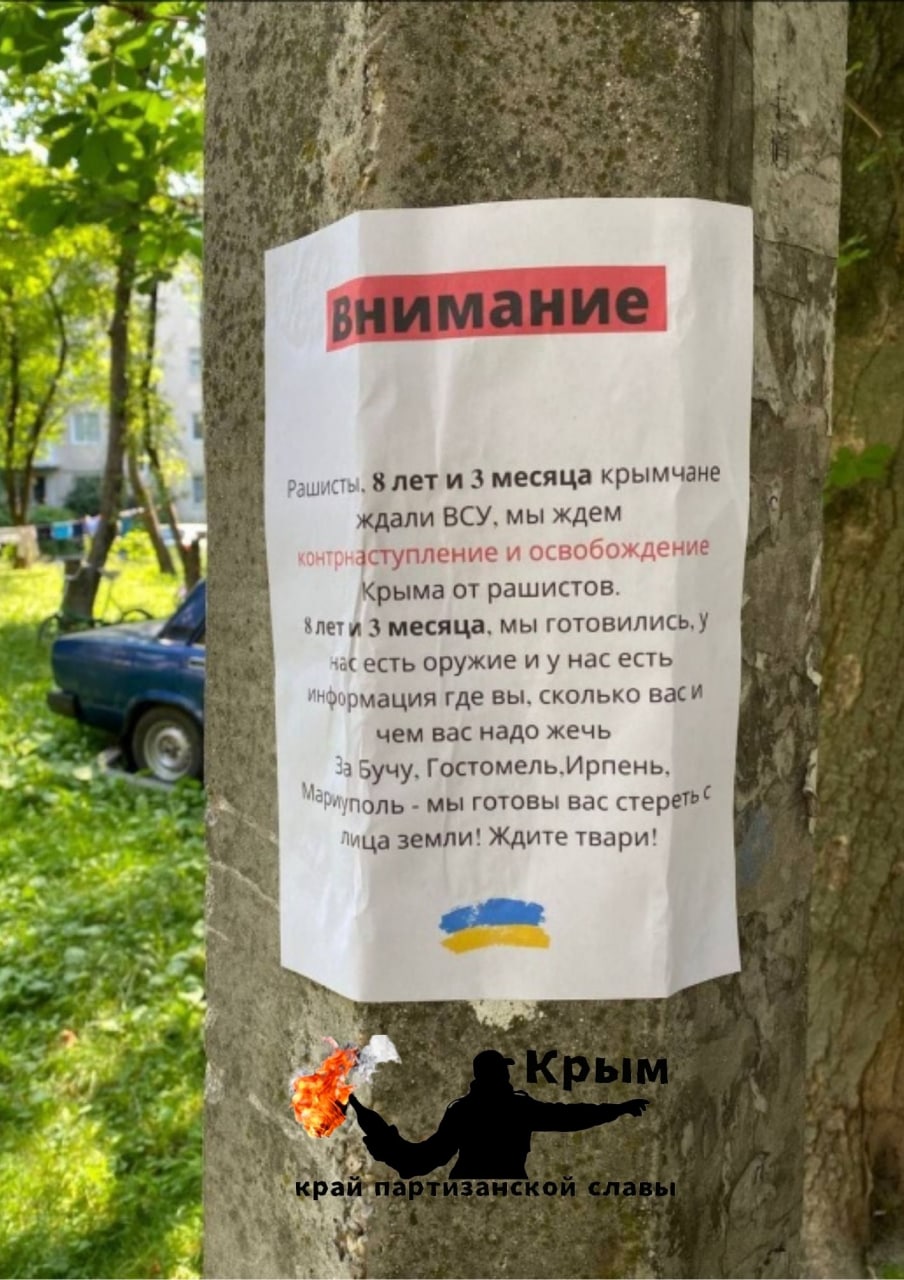
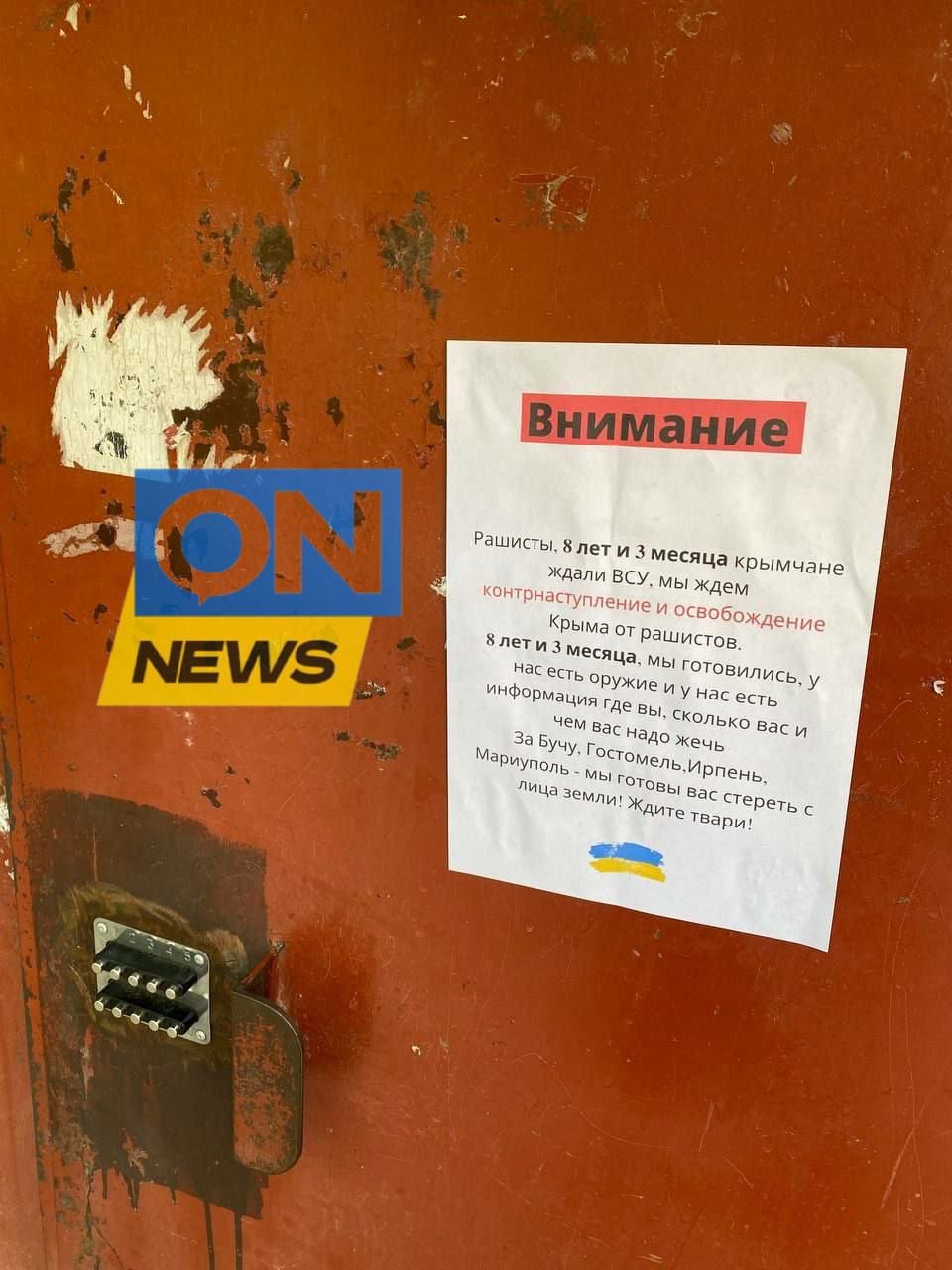
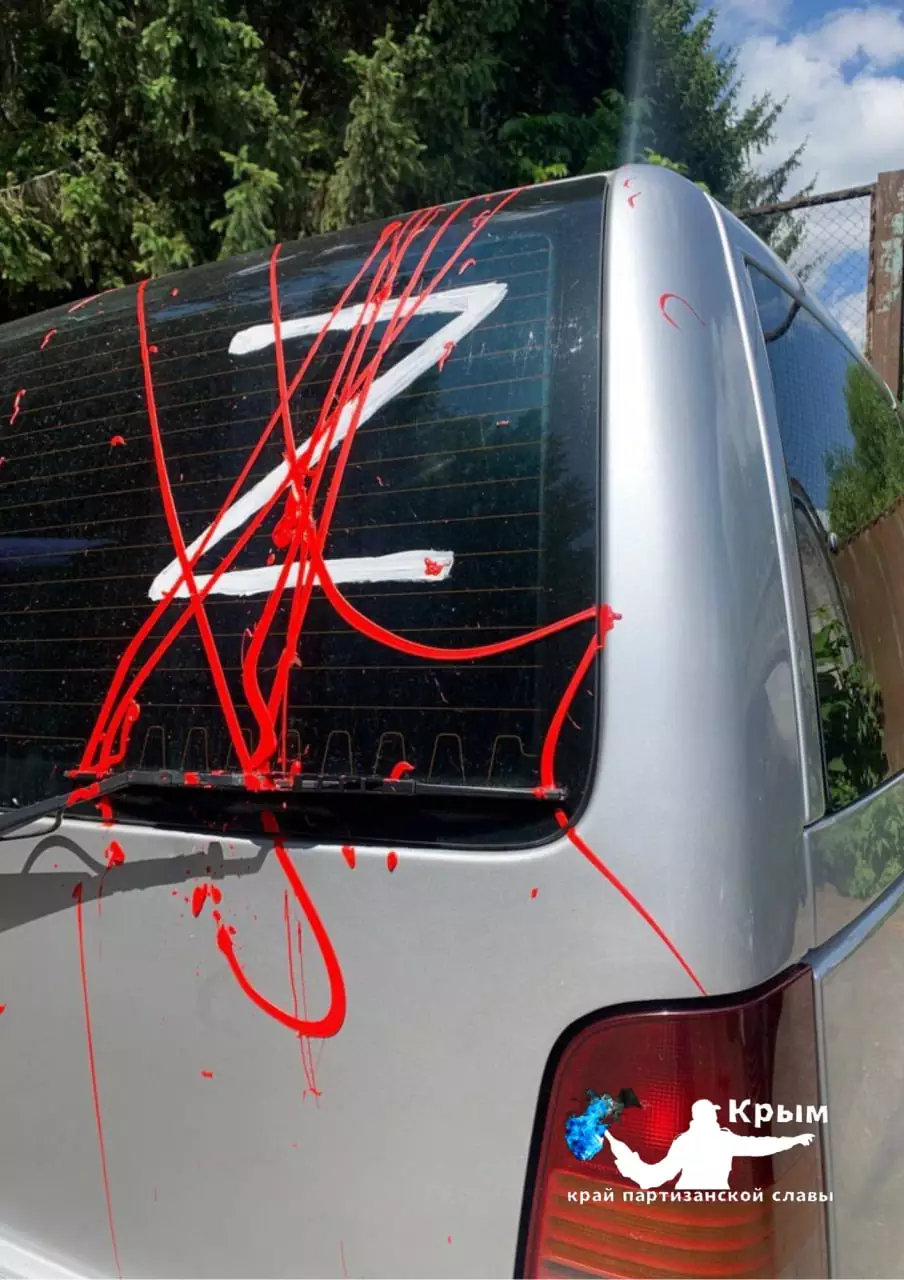
Internet and social media protesting
At first, protesting on social media may have seemed to be the safest way to express opinions. But Russia's special services check messengers and issue threats of state treason sentences for anyone who donates to the Ukrainian Army. A disturbing case was documented by the Crimean Process initiative while monitoring occupational courts. An individual was prosecuted for talking about the war on a messenger app, which was deemed as "discrediting the Armed Forces of the Russian Federation." And on 4th July, Russia's news agency, Ria Novosti, shared a video of the FSB breaking into an apartment of a man who had sent money for Ukrainian soldiers through the Come Back Alive charity foundation. Several people in Crimea were also fined administratively for posts on social media accounts in March 2022. In an interview, Crimean Tatar activist Abdureshyt Dzhepparov was detained for 15 days just for saying that Russian authorities withheld the true number of soldiers killed from the public and used civilian infrastructure objects for military purposes in his interview.
When analyzing the latest activity on social media accounts reveals that posts in local pro-Russian groups received 27-500 likes and up to 200 comments under each post of 20,000 - 88,000 subscriber communities. Partisan groups receive more attention, with around 380 comments. In those groups, members of the resistance movement declared a manhunt for Anatoly Varochkin, Russia's Navy Captain 1st Class, who launched a missile attack on Vynnytsia, killing 23 Ukrainian civilians, including three children. Partisans offered a $15,000 reward for his head and put down his address in Sevastopol.
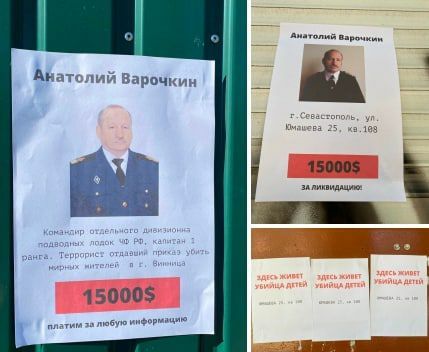
Direct resistance cases: burning buildings, Yellow Ribbon movement, and incendiary weapons into Russian military offices
While local's protests show their indignation towards the Russian occupation by refusing to provide services to invaders, as the Vidnoye vehicle station did by ignoring Russian soldiers' requests to change tires, partisans continue to set fire to administration buildings. In Pushkino, the resistance threw a bottle with flammable substances (Molotov) at the village council to remind Russia's authorities that whilst on Ukrainian soil, they will always feel unwelcome.
Simultaneously, a man fired a homemade weapon at Simferopol's military office, but it missed the target, and the unit remained intact. As a result of the attack, a criminal case was opened in Russia.
According to Anna Lukasevich, there were 76 cases of resistance to Russian leadership from 24th February to 31st May, including the infamous case of the elderly woman who poured blood on the grave of a Russian soldier killed in Ukraine's civil war. The court sentenced her to two years in a colony. Another well-known activist and artist, Bohdan Ziza, is accused of terrorism for splattering the Ukrainian flag colors yellow and blue on the Yevpatoria City Council.
The Yellow Ribbon, a resistance movement gaining traction in occupied territories, encourages residents to wear yellow ribbons and participate in anti-Russian rallies. Partisans from Simferopol, Alushta, and Kerch have already distributed organization leaflets with the date of Ukraine's Independence Day. "Crimea is ready,". "Crimea is a part of Ukraine. Ukraine is returning," announcements read.

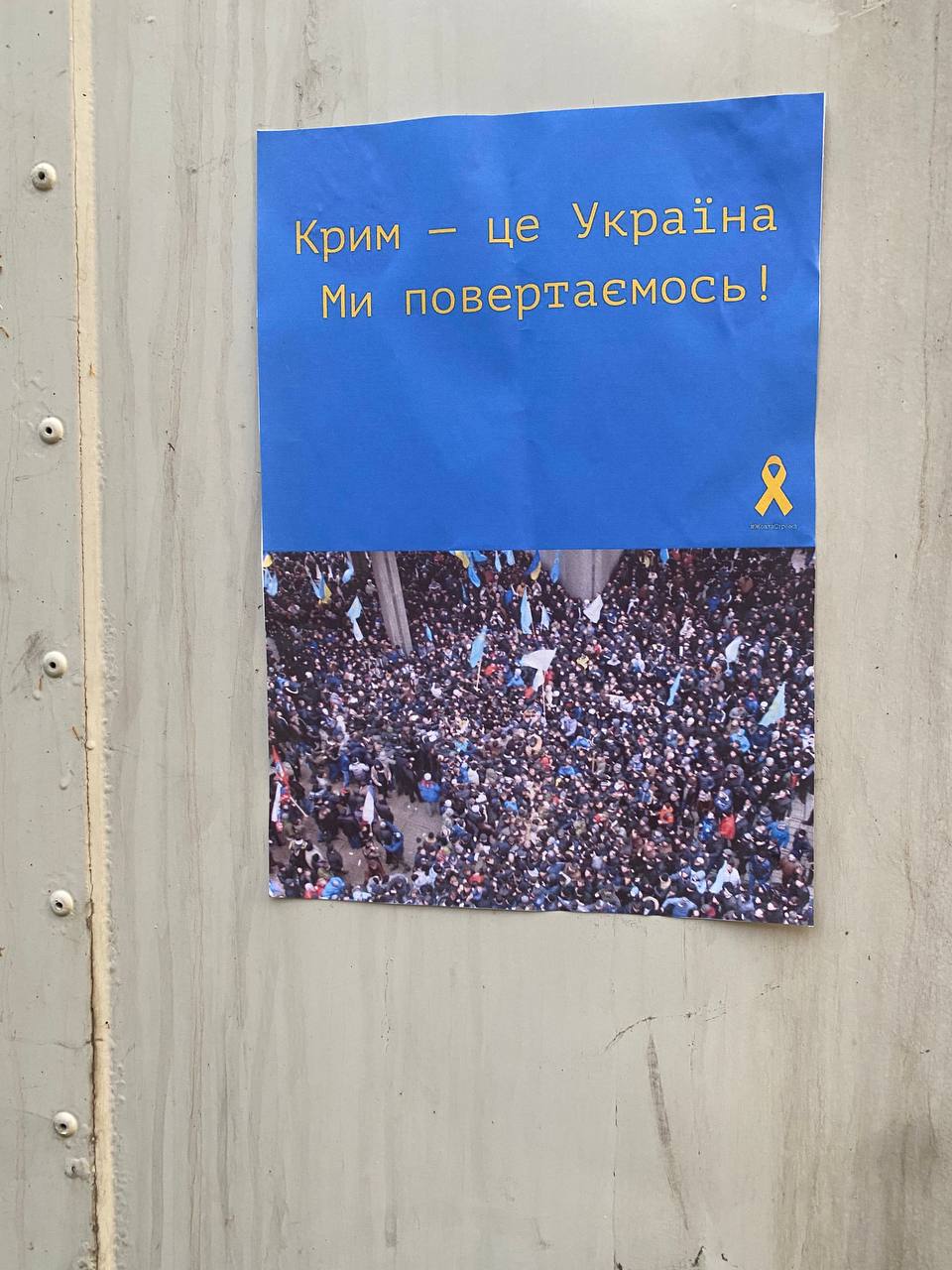
Russian soldiers stormed Ukrainian bases in 2014, seizing critical infrastructure and instructing collaborators on how to stage an illegal referendum. With no international observers, independent journalists, or the option to vote to remain a part of Ukraine, occupation authorities could quickly declare that the Crimean people were devoted to Russia and had indeed chosen to be a part of it.
Oleh Sentsov, a Ukrainian filmmaker, born in Simferopol who was sentenced by Russia for his strong pro-Ukrainian stance and was released due to international pressure, said all of his friends in Crimea await liberation.
Major General Dmitry Marchenko recently described the destruction of the Crimean Bridge - the symbol of Russia's occupation and the main link between Russia and southern Ukraine - as a critical tactical step in the de-occupation plan, along with the destruction of Russia's Navy. The Russian Army uses the bridge to replenish its supplies. Ukraine is currently stockpiling weapons and building upon its personnel resources for the liberation of the south, including Crimea. Partisans, don't forget to remind invaders that their time in Ukraine is running out.
Related:
- The myth of “historically Russian Crimea”: colonialism, deconstructed
- Time for world to recognize Stalin’s deportation of Crimean Tatars as genocide – activist
- Crimean activist fined for condemning Russian invasion of Ukraine
- Russia conceals deaths of Crimean soldiers in Ukraine war amid overcrowded local morgues & hospitals
- Over 80% of Ukrainians want to return occupied Crimea and Donbas; 72% in support of joining NATO – poll
- For Putin, it’s all about Crimea
- Russia sentences RFE/RL freelancer to six years in first case of torture of professional journalist in Crimea
- Russia detains leader of Crimean Tatar resistance movement

